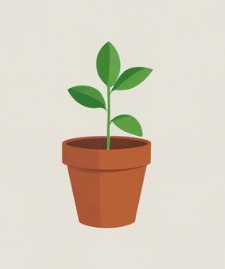Keep Your Garden Thriving with These Simple Routines
Vertical gardening is a brilliant way to grow more in less space — but like any garden, it needs regular care to stay productive. The good news? Once you get into a simple maintenance routine, it’s easy to keep your plants healthy and thriving.
In this post, I’ll walk you through the most important things to check, tweak, and support in your vertical system. Whether you’re using a Garden Tower, wall planters, or a DIY setup, these tips apply to just about any style.
💧 1. Watering Wisely
Watering can be a bit trickier in vertical gardens than in traditional ones. Because gravity pulls water down, the top plants often dry out faster — while the bottom layers can become soggy if there’s poor drainage.
Here’s how to handle it:
- Water from the top and let gravity do the work — but don’t rush it
- Check moisture at different levels with your finger or a soil meter
- Consider adding a drip irrigation line or using a self-watering system
- In hot months, water more frequently but in smaller amounts
If you’re using a system like the Garden Tower 2, it’s designed to distribute water more evenly — but it still needs regular checking, especially in dry or windy weather.
🌱 2. Feeding Your Plants
Vertical gardens use compact soil spaces, so nutrients can run low quicker than in open-ground gardens. Feeding your plants helps them stay lush and productive.
- Use organic fertilizer (liquid feeds, worm tea, or slow-release pellets)
- Feed every 2–4 weeks during the growing season
- Watch for pale leaves or slow growth — signs they need a boost
- Composting systems (like the one in Garden Tower 2) help feed from within
✂️ 3. Pruning and Harvesting
Don’t be shy about trimming your plants! Regular pruning encourages bushier growth, reduces disease risk, and keeps airflow moving through the system.
- Trim back leggy or overcrowded growth
- Pinch herbs and leafy greens regularly to delay bolting
- Harvest often — it keeps your plants producing longer
A quick five-minute prune every few days can make a big difference.
🐛 4. Watch for Pests and Disease
Vertical gardens are usually less prone to pests than ground beds, but they’re not immune. The key is to spot problems early.
Common issues:
- Aphids, spider mites, and whiteflies
- Mold or mildew from overcrowding
- Slugs (especially in lower levels)
What to do:
- Check your plants when watering — turn leaves over and inspect stems
- Use neem oil, insecticidal soap, or garlic spray for light infestations
- Companion planting (like basil near tomatoes) can help deter pests naturally
🪴 5. Check Soil and Containers
Soil breaks down over time and can lose nutrients or compact, especially in tight spaces.
- Refresh the top few inches of soil between seasons
- Loosen compacted areas gently with a fork or stick
- Add compost or organic matter regularly
- Make sure all containers have working drainage holes
Also, give your containers a rinse or scrub between planting cycles if needed.
🧱 6. Keep Structures Secure
Even lightweight vertical gardens can tip or shift in bad weather.
- Towers and racks are on level ground
- Wall planters are securely fastened
- Nothing is at risk of falling in strong wind
- Plastic parts (like in bottle gardens) aren’t cracking from sun damage
If your garden is outdoors, consider adding some anchoring or a sheltered spot.
🌦️ 7. Adjust for the Seasons
Your vertical garden will change with the weather — and so should your care.
- Grow cool-weather crops in spring/fall (lettuce, spinach, radishes)
- Switch to heat-lovers in summer (tomatoes, basil, peppers)
- Shade plants in harsh sun using cloth or temporary covers
- Mulch soil to keep moisture in during dry months
In cold climates, move smaller systems indoors or cover them to extend the growing season.
🧑🌾 Final Thoughts
Caring for a vertical garden doesn’t have to be complicated. A little water, feeding, trimming, and checking — that’s really all it takes.
I’ve found that five or ten minutes a day makes a world of difference. It’s also a nice little daily routine that connects you with your food and gives you a moment of calm.
Just like anything else in gardening, the more you observe and experiment, the more you’ll learn what works for your space.
